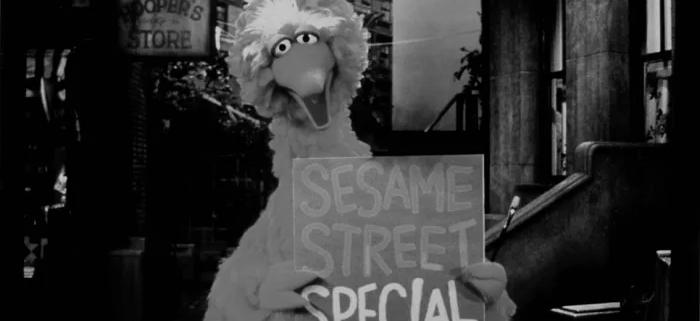How To Raise A Culturally Sensitive Child
It’s never too early to begin the conversation about race with our children. Yet, research published last year reveals most people are avoiding the topic. Only 10 percent of parents discuss race “often” with their children. Black parents (22%) are more likely than whites (6%) to talk about race with their children. Fifty-seven percent of parents “rarely” or “never” talk about gender with their kids and nearly 35 percent of parents “never” talk to their kids about social class. Less than a third of parents of 3-5 year-olds discuss race and ethnicity “sometimes” or “often.”
Parents may shy away from directly addressing skin color and other physical traits in hopes of raising a “colorblind” child, but researchers and educators have found that, in the absence of strong leadership, children fill in the gaps with their own rudimentary prejudices. Children are not inherently “racist,” but they do notice differences, form natural biases, and even judge people based on perceived differences.
The year 2020 will not only go down in history for its pandemic, but for the awakening of society to the Black Lives Matter movement and the cries for equality and justice. Parents can do their part in creating a more culturally sensitive society by teaching young babies and children how to be kind, compassionate, and fair to peers from all races, cultures, and religions. Here we share a few startling facts about racial identity observed in young children and offer suggestions for tackling the issue with the under-six crowd.
It’s Never Too Early To Start The Conversation About Race
School-age may seem like a natural time to talk about diversity, but studies show Kindergarten is much too late to start the conversation. Babies are already watching and forming their own preferences:
- “At birth, babies look equally at faces of all races. By three months, babies look more at faces that match the race of their caregivers” (Kelly et al, 2005).
- “Children as young as two use race to reason about people’s behaviors” (Hirschfeld, 2008).
- “By 2.5 years, most children use race to choose playmates” (Katz & Kofkin, 1997).
- “Expressions of racial prejudice often peak at ages 4 and 5” (Aboud, 2008).
- “At five years, Black and Latinx children show no preference toward their own groups, as compared to White children at this age who are more likely to be strongly biased in favor of whiteness” (Dunham et al, 2008).
- “By Kindergarten, children show many of the same racial attitudes held by adults in our culture. They have already learned to associate some groups with higher status than others” (Kinzler, 2016).
- “Explicit conversations with 5-7 year-olds about interracial friendship can dramatically improve their racial attitudes in as little as a single week” (Bronson & Merryman, 2009).
Bright little minds are always trying to assign rules for what they see around them. They’re looking for patterns – who lives in the homes they see, who is the hero of the movie, what clothes and cars do people have, how are parents and children interacting at the playground, and who seems to have particular jobs or roles at the supermarkets, grocery stores, banks, schools, and other locations they visit frequently. Children often infer that the differences they see are natural, justified, and based on meaningful inherent differences between the groups they see operating in society. The silence of adult bystanders inadvertently allows myths and biases to persist, therefore reinforcing patterns of systemic racism.
What You Can Do To Raise A Culturally Sensitive Child
Make space for your child’s respectful curiosity.
Parents can encourage a child’s natural curiosity and questioning, but reframe the narrative in a direct-but-compassionate manner. For instance, if a child asks about skin color, explain that skin comes in many different colors, but it still works the same way to protect our bodies. By the same token, though we may look different on the outside, we have many of the same hopes, dreams, and feelings on the inside. “The Skin You Live In” is a great children’s picture book exploring this subject. Some parents have compared the concept to ice cream to help little ones understand; ice cream comes in many different flavors — vanilla, chocolate, or butterscotch – but they’re all good in their own ways. If you’re not sure how to respond to common questions kids have, see what neuropsychologists, educators, and parenting coaches have to say.
Start with Sesame Street.
Since the beginning, Sesame Street has been intentional about including diverse voices in its cast of human and muppet characters. From children in wheelchairs, with same-sex parents, or Afghani citizenship, to muppets with autism, HIV, or parents in jail, a wide range of perspectives and topics can be presented in ways that are inclusive and easy for kids to understand. Big Bird alone can’t do all the teaching – parents still need to help children make that leap from fantasy to reality – but multicultural programming is a positive reinforcement for the honest, direct conversations that need to happen amongst family members.
Build an #OwnVoices library.
The #OwnVoices book list is a useful shorthand for books featuring diverse characters written by people who share those identities. As a collective, these books open the door to marginalized groups and invite more voices to share their stories. Reading Partners offers a list of children’s picture books from #OwnVoices, including a book by former president Barack Obama! EmbraceRace.org offers another well-curated list of books featuring diversity.
Choose diverse toys.
Children learn through play. Providing a variety of toys for a child to play with might mean giving girls Hot Wheels cars and STEM toys, or dolls and play kitchen foods for boys. It could be stocking that play kitchen with foods from around the world. It could mean buying a pack of crayons that accounts for every different skin tone and hair color. The Every Mom published a list of 20 diverse toys that make great gifts.
Foster healthy esteem.
“Happy, well-adjusted kids tend not to be bigots,” as KidsPeace Director of Psychology Peter Langman, Ph.D. put it. “Kids who feel like they aren’t valued tend to look for targets—someone they deem ‘different’—to release their own anger and frustration.” Building esteem is especially important for kids who feel singled out for some reason. Use positive reframing – as in “your hair isn’t frizzy; it’s just happy!” or “your nose isn’t too big – you are still growing.” Teach your child it’s important to stand up against bullies – that it’s sometimes necessary to say, “I don’t like your name-calling and I want you to stop.” Praising a child for effort, giving out routine chores, encouraging new hobbies, and spending quality time together are all ways to foster a child’s budding competence, identity, and esteem.
Celebrate multicultural holidays.
One of the easiest and most fun ways to engage with people from other cultures is to share in different holiday celebrations. During these periods, school-age children in particular will notice that children may or may not share their same holidays. Parents can use these times to teach about where a particular holiday originated, why people celebrate it, and what traditions make it special. Celebrations might include African American holidays like Kwanzaa and Juneteenth, Hindu holidays like Diwali and Sankranti, Christian holidays like Easter and Christmas, Jewish holidays like Hanukkah and Rosh Hashana, Muslims holidays like Eid and Ramadan, or Mexican holidays like Dia de los Muertos and Cinco de Mayo. Read a book, watch a movie, make a craft, cook a recipe, visit a museum, attend a local festival – there are many ways to participate.
Get involved in the community.
Since the flawed suburbanization and urban renewal projects of the 1970s, many families inadvertently find themselves stranded in neighborhoods lacking diversity. American Poet Maya Angelou once said, “When you know better, do better.” Parents are the best role models of tolerance and acceptance – not just in speech, but in action. Seeking out friendships and social networks with families of different races should be prioritized – whether it’s through team sports, performing arts, hobbies, clubs, music classes, toddler play groups, community service projects, or church groups. If you live in the New York City region, Shine offers creative multicultural programming combining art, science, music, storytelling, and play that is welcoming to families from all walks of life. By sharing common interests, children become comfortable playing and working with people from cultural backgrounds that may be different from their own.



